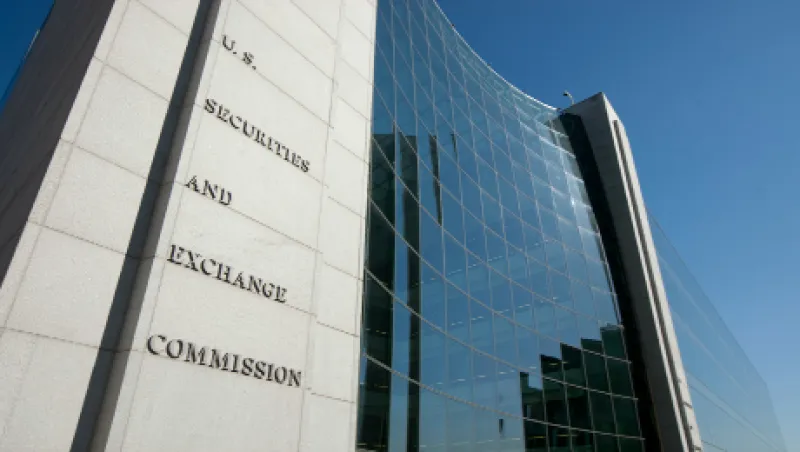Since February nearly two dozen comment letters have flooded the Securities and Exchange Commission as it weighs a November proposal to require broker-dealers that offer private trading venues for public stocks to file new forms illuminating their operations, policies and handling of confidential client information. Whereas alternative trading system (ATS) operators and clients are split on whether the plan goes too far or not far enough, nearly all agree that the spirit of enhancing transparency is a step in the right direction.
Dark pools, which don’t publish buy and sell orders, began as a way for institutional investors to negotiate large trades in secret. Over the past decade these platforms have swelled in size and number, as retail investors, high frequency traders and banks pushed a larger share of volume off the lit exchanges, and U.S. regulators have struggled to keep pace. After two of the largest dark pool operators, Barclays Capital and Credit Suisse Securities, settled lawsuits with the SEC and New York attorney general in January, nearly all dark pool patrons are demanding more disclosure.
Credit Suisse and Barclays agreed to pay a combined $154.3 million to settle allegations that they misled customers. Barclays was accused of not disclosing the extent to which high frequency traders participated in its LX dark pool, whereas Credit Suisse allegedly tipped off two high frequency firms when other clients placed orders in its Crossfinder trading venue.
A spokeswoman for Credit Suisse declined to comment beyond saying, “We are pleased to have resolved these matters with the SEC and the New York attorney general.” Barclays said in an official statement it was also “pleased to have reached agreement,” but the bank did not return e-mails or calls requesting comment.
The irony is, information protection is the main reason institutional investors, like the Teacher Retirement System of Texas, started using these platforms. “Certain alternative trading systems allow TRS the ability to efficiently cross orders with other investors while maintaining anonymity and limiting information leakage,” says Bernie Bozzelli, director of trading at the $128.5 billion pension fund. “This enhances our ability to efficiently implement the trust’s investment views.”
Unfortunately, the solution for investors may not be so simple as avoiding less trustworthy dark pools. “Investors and brokers may still feel compelled to route to large, even if conflicted, venues because they are significant sources of liquidity,” says Tyler Gellasch, executive director of the Healthy Markets Association, an advocacy group formed in September by a handful of concerned asset managers, including Janus Capital Group and Brandes Investment Partners.
Nearly 40 percent of daily equities trading in the U.S. has moved off the exchanges, with about 16 to 18 percent happening on dark pools, up from 4 percent in 2008, according to a September study by Healthy Markets. The report estimates that between November 2014 and August 2015, more than 79 billion shares that changed hands on dark pools were in violation of the law — 43 percent of all ATS trading during that period.
With 37 dark pools and 12 exchanges, navigating all of the different rules, structures and constituencies sounds like a tall order for traders. “When you have so many different venues, it should be the responsibility of the venue to inform the trader,” says Seth Merrin, founder and CEO of broker-dealer Liquidnet Holdings, which operates its own dark pools.
So, what information are clients currently lacking? TRS’s Bozzelli has a few ideas: “ATSs could be improved by providing additional transparency about their technology and control structure to avoid both market disruptions and information leakage. ATSs should also provide formal statements on how their systems support the SEC best-execution mandate, clearly stating their value proposition.”
When it comes to best practices, some traders are already voting with their feet. Credit Suisse’s weekly volume on Crossfinder fell from 646 million shares to 513 million two weeks after the settlement, according to the Financial Industry Regulatory Authority. Gaining from the Swiss bank’s loss, IEX Group saw its weekly volume surge 26 percent, usurping Crossfinder to become the second-largest dark pool provider in the U.S., after UBS Securities, which paid $14.5 million in January 2015 to settle charges by the SEC that its ATS had violated securities laws.
Backed by prominent asset managers such as Greenlight Capital and Pershing Square Capital Management, IEX opened for trading in 2013 with a built-in speed bump it claims prevents automated traders from preying on institutional investors. “The way the market structure is currently set up, they’re being disadvantaged by things that exchanges are selling to certain high speed traders,” says chief executive Bradley Katsuyama, referring to the co-location opportunities and faster data feeds that many trading venues offer. “This is a market that favors short-term interests over long-term interests.”
IEX filed an application with the SEC in September to become a full-fledged stock exchange, hoping to increase the venue’s market share at the expense of incumbents like the New York Stock Exchange, BATS Global Markets and Nasdaq. “We believe we can combine the best of exchange and dark pool functionality in one market,” says Katsuyama. IEX’s bid has drawn criticism from high frequency traders and exchanges alike.
William Harts, CEO of the Modern Markets Initiative, an advocacy group for high frequency trading, dismisses IEX’s speed bump as a marketing ploy and argues that investors should embrace automated traders because they provide liquidity. Simplifying market structure and increasing transparency would be a boon to high speed traders by boosting investor confidence and consequently trading volumes, Harts adds. “If investors don’t understand market structure, if you can’t explain to investors why there are 50-plus marketplaces, then they’re going to have less confidence,” he explains. “And that’s bad for us as an industry.”
More clarity and uniformity in rules would also mean less work for high frequency traders, according to Jamil Nazarali, head of Citadel Execution Services, the $25 billion Chicago-based hedge fund firm’s market-making business. In today’s marketplace Nazarali’s team needs to write and monitor a variety of algorithms to account for differences in rules across venues. “We have to code separately to each one,” he explains. “It would make things so much more efficient and easier for investors if we didn’t have to do that.”
To the satisfaction of dark pool clients, the regulators’ drive to clean up alternative exchanges has gained momentum from the Barclays and Credit Suisse settlements. “These cases are the most recent in a series of strong SEC enforcement actions involving dark pools and other alternative trading systems,” SEC chair Mary Jo White said in a statement. “The SEC will continue to shed light on dark pools to better protect investors.”
The biggest losers will be the banks, according to Liquidnet’s Merrin. He expects the race to be top dog of dark pools to come to an end. “The reward [for banks] of being in the ATS space is probably not going to be worth the risk going forward,” says Merrin. “There’s really not a lot of money in it.”
Follow Jess Delaney on Twitter at @jdelaney_NYC.






